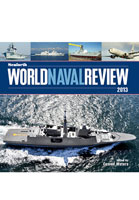The Boat that Won the War (Hardback)
An Illustrated History of the Higgins LCVP
Publicity
- Watch the promotional video via YouTube
- As featured on WBAY TV-2
- Charles C Roberts, featured on YouTube at the Roberts Armory World War 2 Museum on Veterans Day 11 November 2017. Watch it here!
(click here for international delivery rates)
Order within the next 7 hours, 12 minutes to get your order processed the next working day!
Need a currency converter? Check XE.com for live rates
| Other formats available | Price |
|---|---|
| The Boat that Won the War ePub (55.8 MB) Add to Basket | £10.00 |
The Landing Craft Vehicle Personnel – LCVP for short, or simply the ‘Higgins boat’ to most of its users – was one of the keystones of victory in the Second World War. Like the army’s Jeep or the Air Force’s C-47 transport, it served in almost every theatre of war, performing unglamorous but vital service in the Allied cause. Derived from a humble workboat, the Higgins boatbuilding company designed a brilliantly simple craft that performed its role so well that over 23,000 of them were constructed – indeed, a high proportion of all the troops landed on enemy beaches came ashore from LCVPs, an achievement that led General Eisenhower to describe it as ‘the boat that won the war’. As Eisenhower had more experience of major amphibious operations than any other commander, it is a judgment to be taken seriously.
This book combines the first in-depth history of the development and employment of the type, with a detailed description of its construction, machinery, performance and handling, based on the author’s first-hand experience masterminding the restoration of a wartime example for his museum. Well illustrated with plans and photographs, it will be of interest to modelmakers and enthusiasts, both military and naval.
reviewed by David Hobbs
Warship Annual, May 2019
Since these small craft get but frequent reference and little careful study in other more general operational histories, this slight volume fills an interesting, and in its way, valuable niche in the wartime invasion histories.
The Northern Mariner / Le marin du nord, XVIII, No. 2 (Spring 2018) – reviewed by Fraser M. McKee Toronto, Ontario
This is an excellent examination of one of the most important Allied naval weapons of the Second World War.
History of War - John Rickard
Read the complete review here.
Great book for enthusiasts of technological facts about WW2, and full of useful technical details.
FSAddon, Francois A. Dumas
Read the complete review here.
As featured in
VaeVictis, November/December
Clearly the author has a great passion for and knowledge of his subject, so I would suggest this is the most detailed look at the Higgins LCVP and the topic in general that you may want to have in your library.
IPMS Magazine
The title may be an over-statement but this is a fine book about an important class of vessel. WWII saw amphibious warfare come of age. Dunkirk saw the creative use of large numbers of very small boats to evacuate hundreds of thousands of soldiers off the beaches under heavy air attack and this was followed by the need for large numbers of vessels to land troops back on heavily defended beaches – Highly Recommended.
Firetrench
Read the complete review here.
A great work.
STORIA militare, October 2017
Throughout the book there are lots of illustrations including archive photos, colour artwork, diagrams from manuals and company sales literature and detailed builders drawings. The appendices features annotated drawings and even the extensive list of parts relating to each drawing. The author was apparently involved in the modern day restoration of an original Higgin Boat LCVP and this is testament to the level of detail that went into it. It is a book that will interest the historian, be a fine modellers reference while being invaluable to anyone considering their own restoration project while at the same time I believe interest wooden boat builders and other woodworkers with the techniques employed in the design and construction of these boats.
Get Woodworking, Robin Buckland
Finally, another factor to think about is that while the allies built thousands of various types of Landing Craft, and that while the Japanese did employ their own, Germany did not develop any such specialised vessels. Whatever your interest, I heartily recommend this one to add to your bookshelf if you have any interest in WW2 Landing Craft and or wooden boat building.
Read the complete review here.
Whatever your interest, I heartily recommend this one to add to your bookshelf if you have any interest in WW2 Landing Craft.
Military Model Scene, Robin Buckland
Read the complete review here.
About Charles C Roberts
CHARLES C. ROBERTS JR is the founder of Roberts Armory, a museum of Second World War military vehicles that is located in Rochelle, Illinois. Specializing in the acquisition and display of armoured vehicles, artillery and other artefacts used by American forces and its Allies in the Second World War, in its collection the museum has an example of the M22 ‘Locust’ light tank. Charles is an expert on tank warfare and the author of Armored Strike Force, a history of the American 70th Tank Battalion. For more information on the museum, please see: www.robertsarmory.com
US Airborne Tanks, 1939–1945 (Hardback)
From their first introduction at the Battle of the Somme in the First World War, tanks proved to be one of the most important military developments in the history of warfare. Such was their influence on the battlefield, both as infantry support and as an armoured spearhead, their presence could determine the outcome of any battle. Another significant development during the 1930s was that of airborne forces, with a number of countries experimenting with air-dropped troops. Such a concept offered the possibility of inserting soldiers behind the front lines to sow fear and confusion in the enemy’s…
By Charles C RobertsClick here to buy both titles for £37.49


















